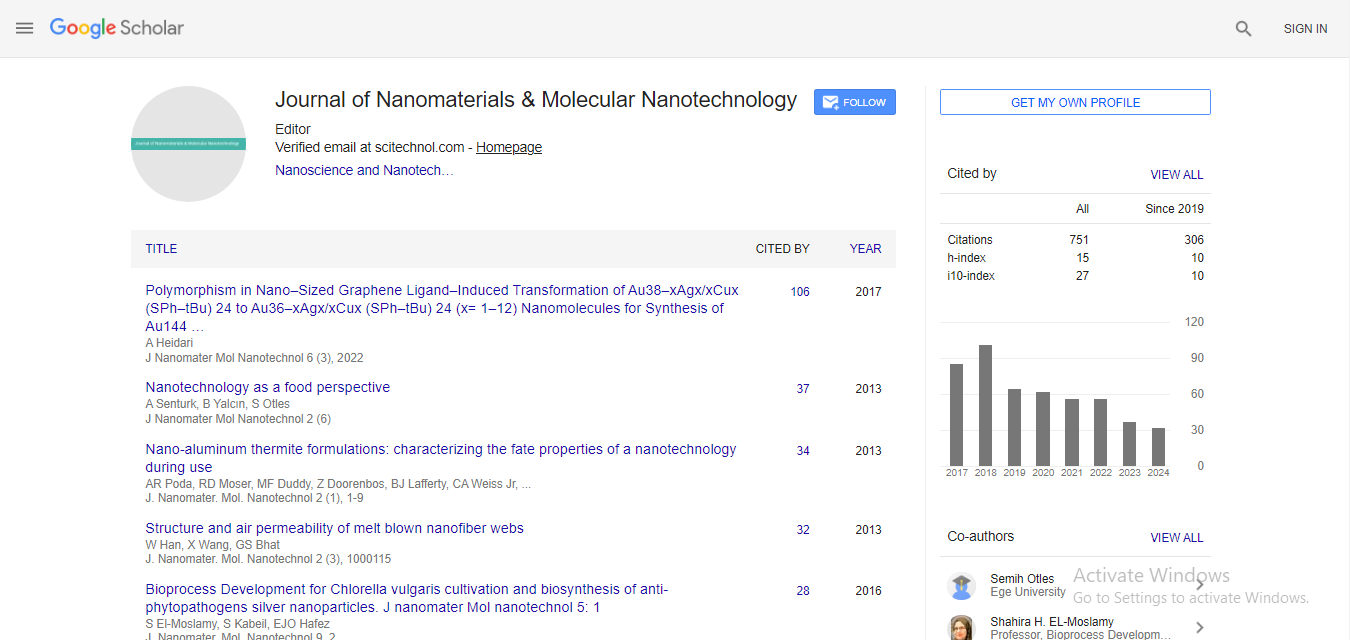Research Article, J Nanomater Mol Nanotechnol Vol: 9 Issue: 6
Synthesis of Metal-Oxide (Al2O3) Nanoparticles by using Autoclave for the Efficient Absorption of Heavy Metal Ions
Abstract
Metal-oxide (Al2O3) nanoparticles were synthesized by hydrothermal method within a self-designed stainless-steel autoclave, sealed, and heated at 140 �?� C for 48 hours. The X-ray Diffraction (XRD) analysis confirmed characteristic Al2O3 crystal peaks at diffraction angles near 25.8 �?�, 35.1 �?�, 37 �?�, and 41 �?� (2θ). XRD analysis also measured the average crystallite size of 30 nm for the as-synthesized γ- Al2O3 nanoparticles. The absorption bands of Al2O3 stretching were confirmed at 515 cm-1 and 736 cm-1 through Fourier Transform Infrared Spectroscopy (FT-IR) analysis. The UV-Vis spectroscopy identified a strong absorption peak at 267 nm for (Al2O3) nanoparticles. The bandgap was calculated at 5.34 eV from the Tauc plot that was much lower than that of the bulk counterpart due to the existence of defect states located in the bandgap region. The performance of the removal of heavy metal ions was examined by a batch-adsorption technique. The removal of lead and cadmium ions from aqueous solutions was rapid and efficient. It was found to be 98% and 85% for Pb(II) ion and Cd(II) ion respectively. The adsorption isotherms were determined by using Langmuir isotherm and the maximum absorption capacity was identified as 6.3 mg/g and 1.8 mg/g for Pb(II) ion and Cd(II) ion respectively for 10 ppm solution respectively.
Keywords: Nanoparticles; Alumina (Al2O3); Autoclave; Band gap; Adsorption; Langmuir isotherm
 Spanish
Spanish  Chinese
Chinese  Russian
Russian  German
German  French
French  Japanese
Japanese  Portuguese
Portuguese  Hindi
Hindi 



